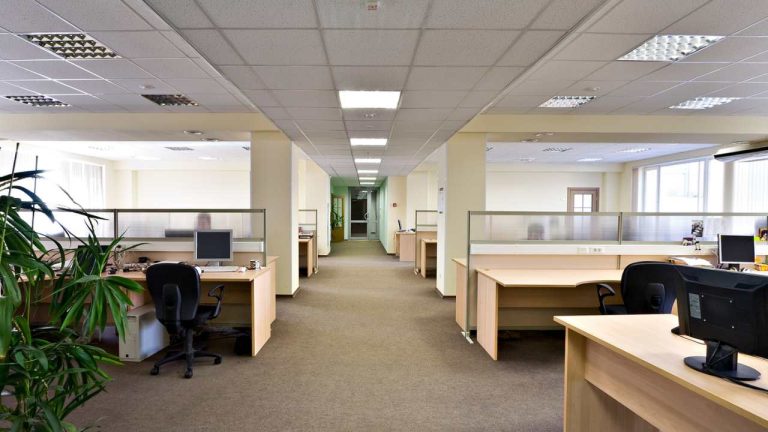A Guide to Investing in Commercial Rental Property
Investing in commercial rental property can be a beneficial way to diversify your investment portfolio and generate passive income.
Unlike residential real estate, commercial properties are rented out to businesses and organizations for commercial use, such as office spaces, retail stores, and industrial warehouses.
Commercial rental property investment offers a reliable source of income, potential for long-term capital growth, and tax advantages for investors.
A thorough comprehension of the commercial real estate industry and the various factors that can influence the profitability of your investment is crucial before embarking on this venture.
This article will help you succeed in commercial rental property investing, whether you’re just starting out or a seasoned investor.

Understanding Commercial Rental Property
Commercial rental property refers to real estate properties leased to corporations or organizations for commercial purposes. This category includes office buildings, retail spaces, industrial warehouses, and storage facilities, among others.
Acquiring knowledge of the various aspects of leasing, owning, and administering commercial rental property is necessary to comprehend this asset class.
Several Essential Factors include:
Location: The location of a commercial rental property can significantly impact its profitability. When selecting an area, it is essential to consider factors such as accessibility, visibility, and local demographics.
Tenant Selection: Choosing the appropriate occupants for a commercial rental property is essential to its success. Screening prospective tenants and choosing those with excellent credit, solid finances, and a stable business model is critical.
Lease Agreements: A well-written lease agreement is indispensable for both the proprietor and the tenant. It should detail the terms and conditions of the lease, including the rent, duration of the lease, and maintenance responsibilities, among others.
Maintenance and Repairs: Maintenance and repairs are essential for attracting and retaining tenants in a commercial rental property. It is necessary to have a comprehensive maintenance plan in place and to address any restorations or maintenance issues promptly.
Legal Considerations: Commercial property landlords must adhere to local, state, and federal laws and regulations. It is essential to collaborate with commercial lawyers to ensure that all required permits and licenses are obtained and that the lease agreement is legally binding.

Benefits of Investing in Commercial Rental Property
High Rental Income: Commercial properties typically generate higher rent than residential properties. Commercial tenants generally are businesses or organizations willing to pay more for the required space to conduct operations. In addition, commercial leases are often renewed, which provides more stable rental income and reduces vacancy and turnover rates.
Long-Term Appreciation: Commercial rental properties can increase in value over time, resulting in long-term appreciation that enhances your investment. This appreciation may be influenced by location, market demand, and property enhancements.
Tax Advantages: There are tax advantages to investing in commercial rental property. These include the ability to deduct expenses like property taxes, mortgage interest, and depreciation. In addition, if you sell a commercial property for a profit, you may be able to defer capital gains taxes by reinvesting the proceeds in another property through a 1031 exchange.
Diversification: Investing in commercial rental property can reduce risk and diversify your portfolio. You can reduce your vulnerability to market fluctuations and economic downturns by diversifying your investments across various asset classes.
Researching and Evaluating Commercial Rental Property

Determine Your Investment Criteria
Evaluation of commercial rental properties necessitates investment criteria. Based on your investment criteria, establish evaluation criteria for commercial properties. Your financial objectives, risk tolerance, and time frame must determine investment criteria. The properties that meet your investment criteria will contribute to your success.
Consider location, property type, tenant profile, lease terms, and cash flow projections when investing. Location influences commercial real estate rental revenue and value. Property type should correspond with investment objectives and risk tolerance.
The stability and predictability of rent depend on tenant and lease characteristics. Finally, cash flow projections can disclose whether the property will generate sufficient income to cover expenses. To evaluate commercial rental properties, you must understand your investment criteria.
Conduct Market Research
When looking into and assessing commercial rental property, conducting market research is crucial. It entails collecting and analyzing data regarding the current condition of the real estate market, as well as the demand and supply dynamics of the specific location and property type under consideration.
Investors can determine the viability and profitability of a rental property and identify potential hazards and opportunities by conducting market research.
To conduct effective market research, investors must collect information on current market conditions, including vacancy, rental, and absorption rates.
Demographics
In addition, they should examine demographic and economic factors that can influence the demand for rental properties, such as population growth, income levels, and employment opportunities.
In addition, investors should evaluate the competitive landscape and the strengths and weaknesses of comparable properties in the area.
By conducting extensive market research, investors can make informed decisions and negotiate more favorable terms for their rental property investments.

Evaluate the Property
A crucial step in researching and evaluating commercial rental property is to assess the property. It entails analyzing the property’s physical condition, location, market value, and income potential.
This evaluation will assist in determining whether or not the property is worth investing in and whether or not it can generate a profitable return on investment.
Property Inspection
To evaluate the property, a professional inspector must be employed to examine the building’s structure, mechanical systems, and overall condition. The inspector’s report will provide insight into potential issues that could necessitate costly repairs or renovations, enabling investors to decide whether to invest.
Determining the market value of a commercial rental property is another crucial aspect of its evaluation. This requires researching and analyzing the local real estate market and comparable properties.
The property’s location and neighboring area must also be evaluated, as they can affect its value and desirability to prospective tenants. When determining the value of a property, investors should also consider zoning regulations, traffic patterns, and adjacent conveniences.

Analyze the Tenant Base
Tenant composition provides valuable insight into the property’s current and prospective revenue streams and its stability and growth potential.
When analyzing the tenant base, there are several important factors to consider, including the categories of businesses and industries represented, the length and terms of their leases, and their creditworthiness.
Tenant Types and Groups
Identifying the categories of businesses and industries that occupy the property is crucial to analyzing the tenant base.
Different types of businesses have varying space needs; some tenants may be more desirable than others. For instance, a property primarily serving technology companies may experience greater demand and potentially higher rental rates than one primarily serving retail businesses.
A diverse tenant base can stabilize and mitigate risk during economic downturns and industry-specific disruptions. In addition, analyzing the duration and terms of the leases can provide insight into the tenant base’s stability and the potential for future rent increases.
Develop a Management Plan
A management strategy is crucial when evaluating commercial rental property.
Property management staff roles, maintenance schedules, budgeting, and financial management, tenant screening and leasing, and emergency response processes should all be included in the management plan.
Property owners may ensure a profitable investment by developing a detailed management plan.
To develop a management strategy, it is necessary to identify the stakeholders within the property. A few examples are property managers, leasing agents, maintenance employees, accountants, and attorneys.

The management strategy should define the roles and responsibilities of all stakeholders. Property upkeep, including routine maintenance and repairs or renovations, should also be included in the plan.
Budgeting and financial management should also be included in the management plan, as well as money for ongoing maintenance and repairs and potential capital improvements or renovations.
Finally, the management plan should include tenant screening, leasing, and emergency response provisions. Owners may protect and profit from their investments with a well-planned management strategy.

Conduct Due Diligence
Commercial rental property research requires due diligence. Before purchasing or renting a property, one must perform due diligence by inspecting it.
This process includes financial statements, property inspections, and market research. Due diligence identifies hazards and issues with a property that may affect its value or suitability for commercial use.
The due diligence involves conducting a financial investigation and examining the property’s financial records to identify risks and issues.
Economic analysis can help investors assess the risk and return of a property. Physical inspection is a component of diligence. This involves examining the property for physical defects affecting its marketability or value.
This includes inspecting the property’s structure, infrastructure, and other elements. Due diligence assists investors in determining whether to purchase or lease a commercial rental property.
How to Finance a Commercial Rental Property
Financing commercial rental property is a crucial consideration for investors, as it can affect the investment’s potential return and overall profitability. Investors can access financing options, including traditional bank loans, private loans, and crowdfunding.
Various factors, such as the investor’s financial situation, the scale and nature of the investment, and the investor’s investment objectives, will determine the most suitable financing option.
Financing commercial rental property enables investors to leverage their capital and potentially increase their return on investment. Investors can acquire larger and more valuable properties than they could with currency alone by obtaining financing.
In addition, financing can allow investors to allocate capital to other investments or business opportunities, thereby enhancing their investment strategy. However, financing carries risks, such as the possibility of default or foreclosure if the investment does not generate sufficient rental income to cover the financing costs.

Conclusion
To succeed in investing in commercial rental property, it’s crucial to have a thorough understanding of the industry and the various factors that can influence the profitability of your investment. While it can be a highly lucrative and rewarding venture, it’s critical to approach it carefully.
Investing in commercial rental properties involves risks, but you can reduce these risks and gain passive income and long-term capital appreciation by adopting a comprehensive approach to investing.
With this guide’s help, we hope you have been provided with the information and tools you need to begin investing in commercial rental properties. Invest wisely and have a good time!





